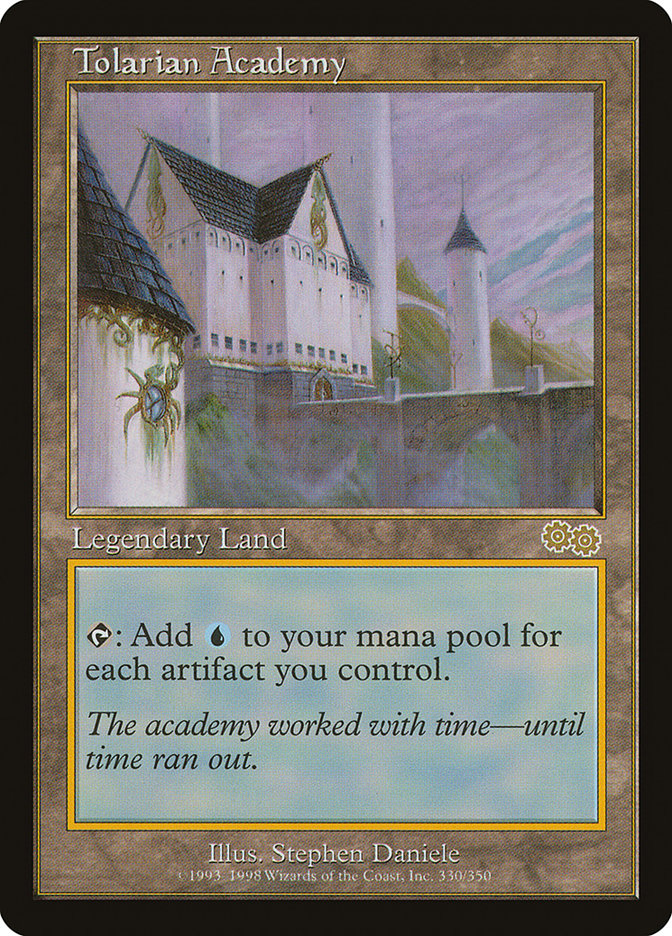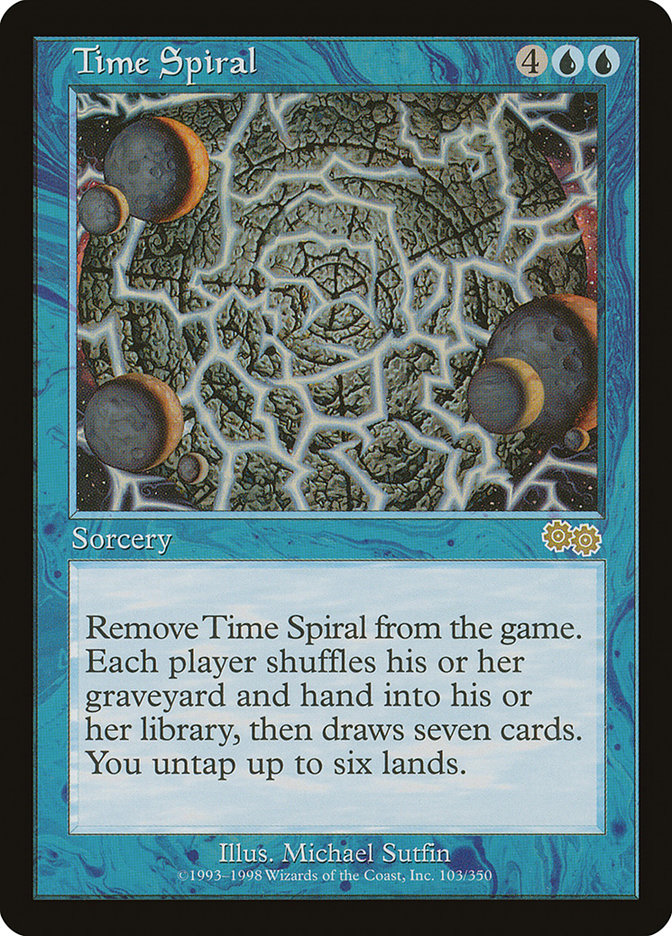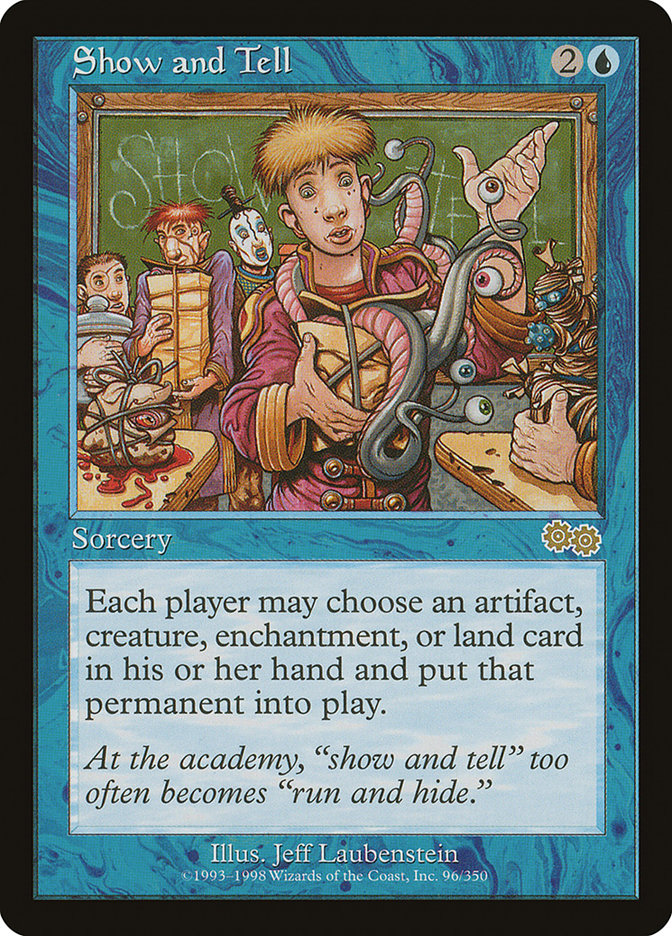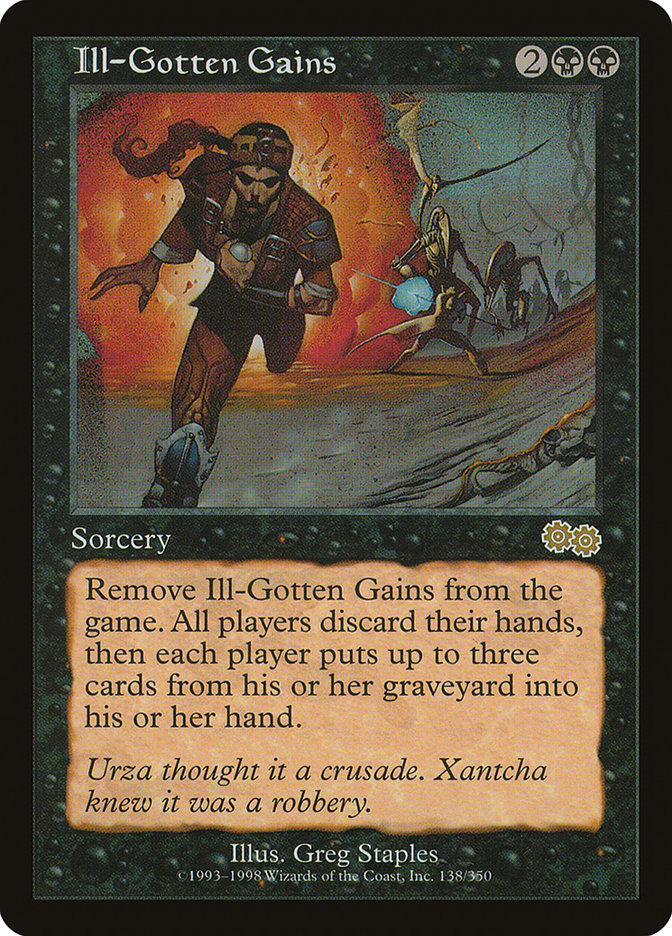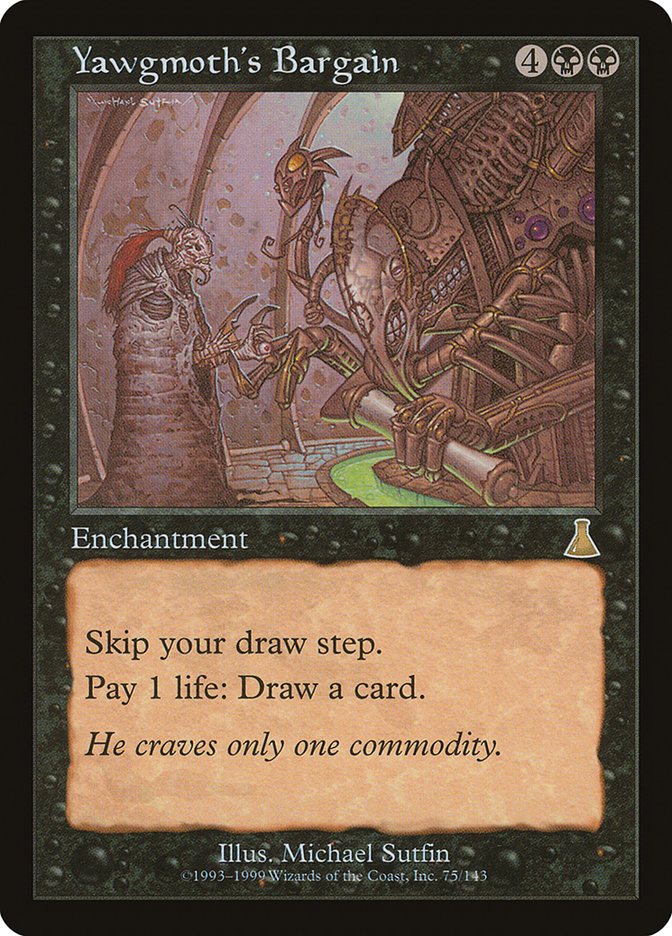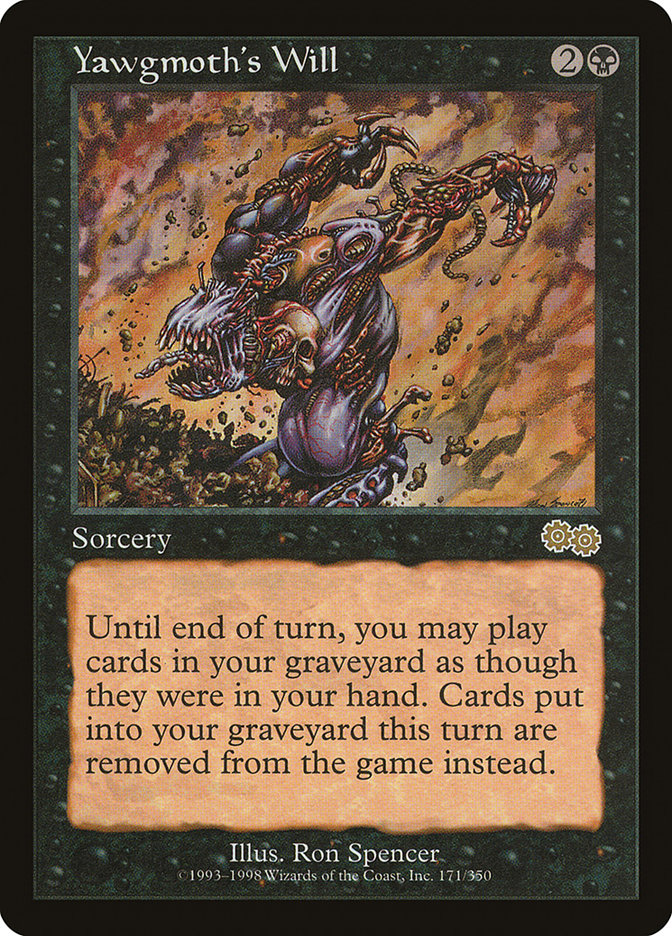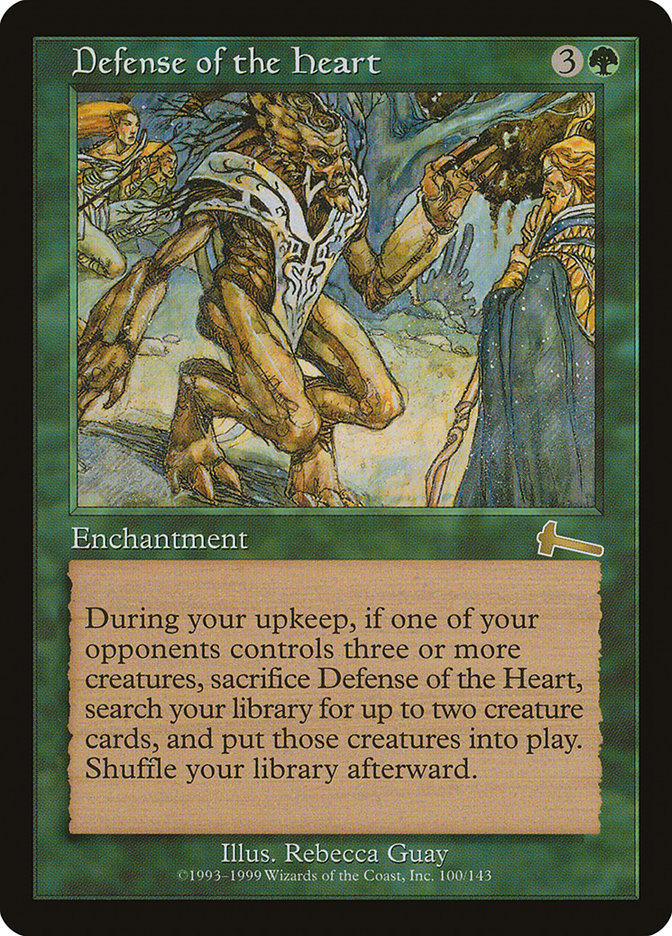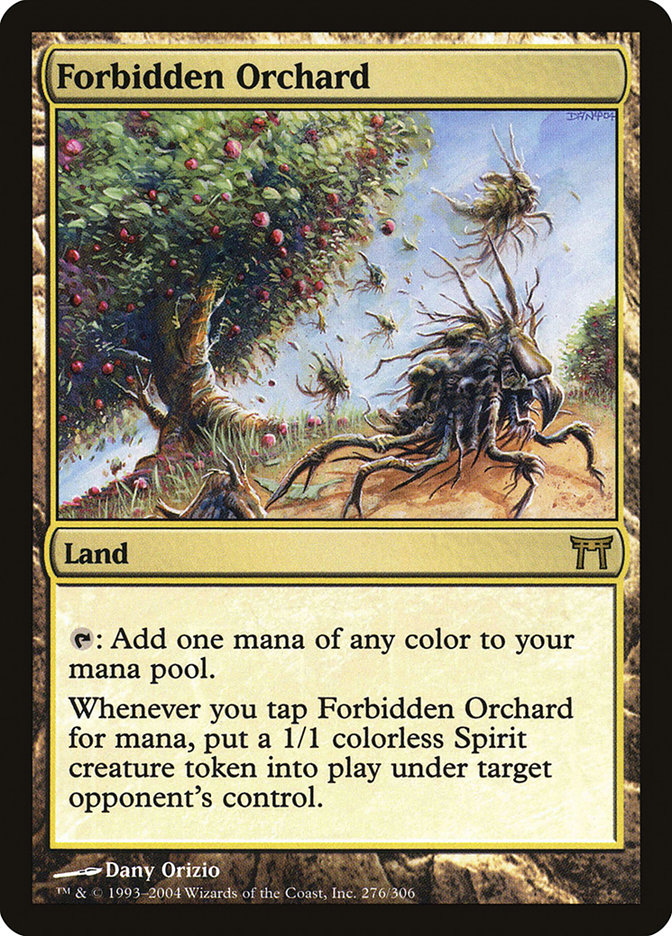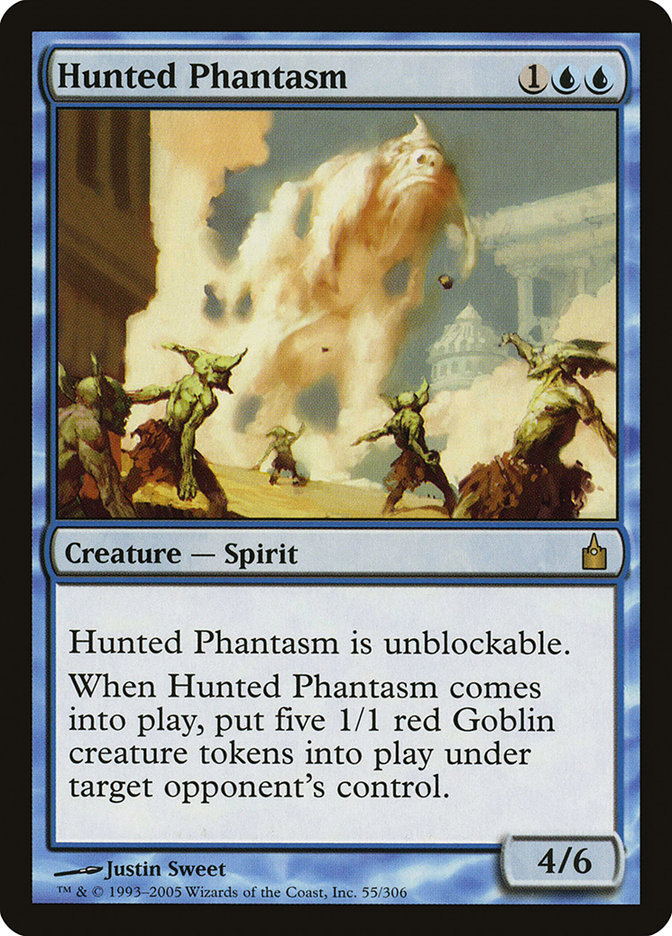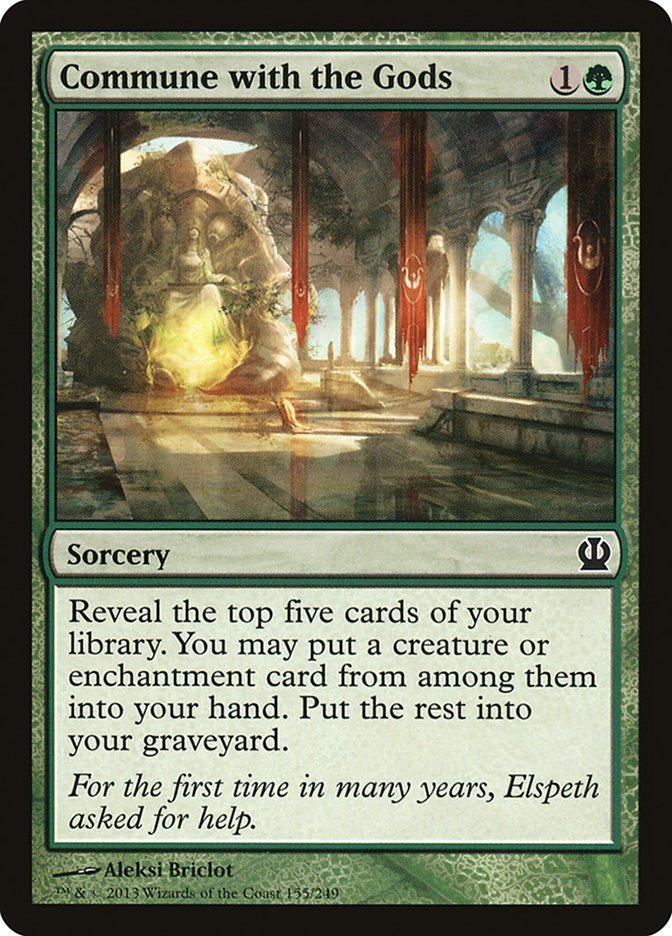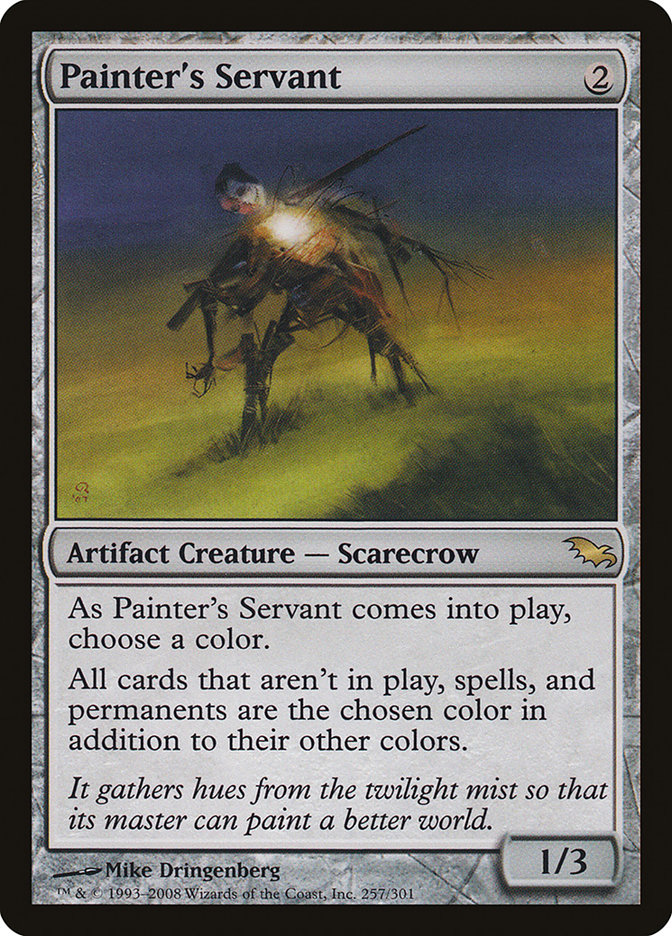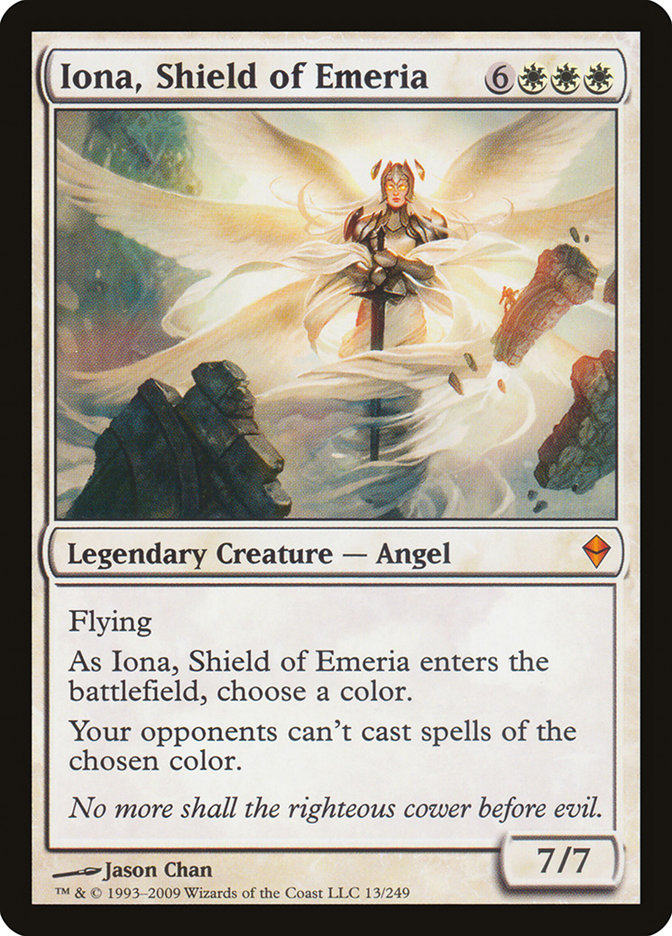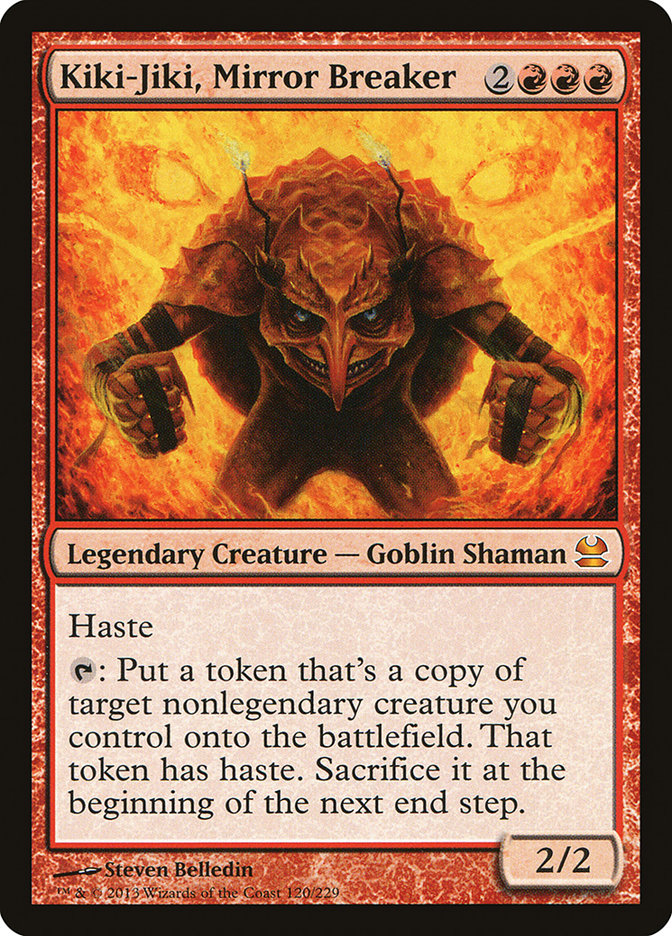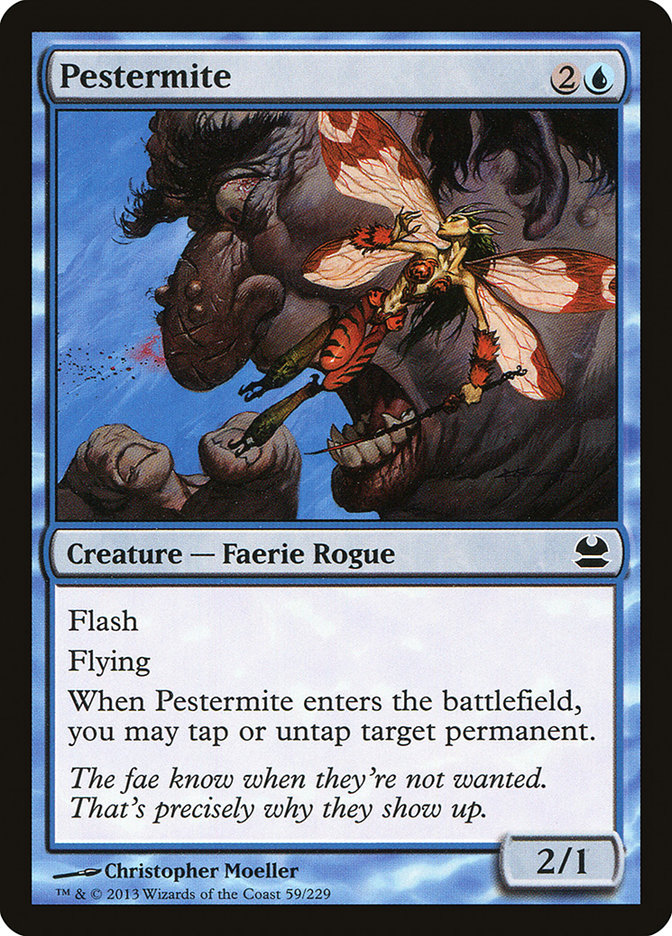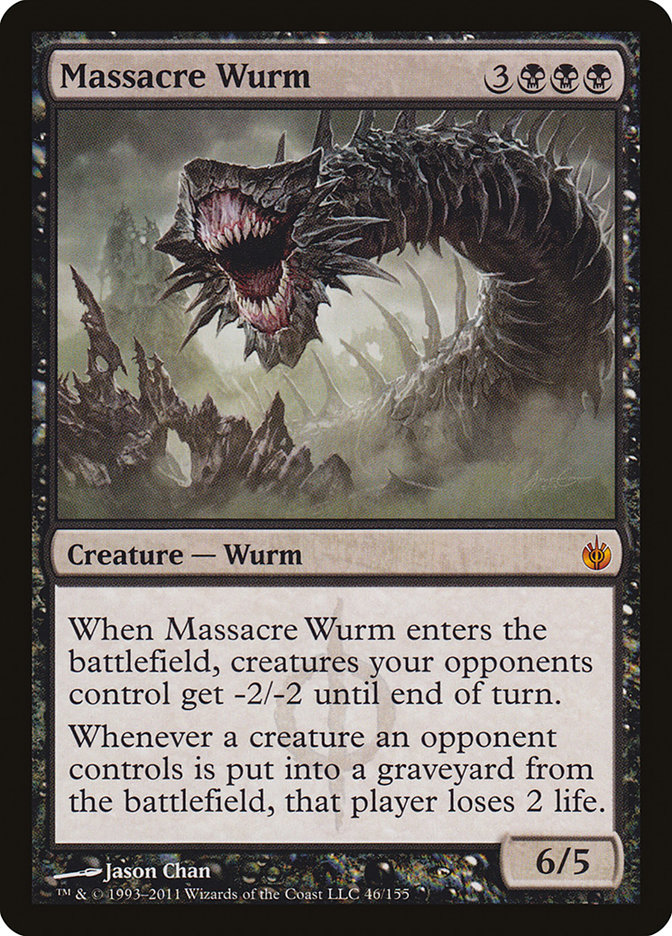The people have spoken.
Defense of the Heart, come on down. It’s time for your fifteen minutes of fame.
Let’s start at the beginning, way back when Defense of the Heart was printed. Many cards from this long ago—especially those from Urza block—used to be powerhouses of some format.
People died very early in the game a whole lot. The game was not especially creature oriented like it is today. So it makes sense in that context that Defense of the Heart didn’t particularly shine.
Nowadays people are willing to play four-mana cards that tutor up a single green creature. Defense of the Heart is a four-mana card that tutors up any two creatures from the history of Magic. The power level is clearly there. People just haven’t found the right home for it.
That changes today.
Let’s get Defense of the Heart up on the screen and talk about its requirements for a bit.
Instead of asking you to have a creature in your hand or asking you to have a green creature in play to sacrifice, Defense of the Heart asks something of your opponent. Specifically, it asks them to have three creatures. Not every deck is going to play three creatures against us, so it’s clear pretty early on that we’re going to have to help them out.
The most traditional way to help out an otherwise creatureless opponent is with Forbidden Orchard.
This has been most often used as a way to trigger Oath of Druids in Vintage, but we can use it two or three times and trigger our “fixed” Oath of Druids. It’s a City of Brass (or Mana Confluence for you new kids on the block) with a different kind of “drawback”—instead of simply losing a life, you give them one life every turn until you can punish them for having that 1/1 in play.
And believe me, we’ll get to that soon enough, trust me.
So we have Defense of the Heart and Forbidden Orchard. Not bad, but a little time consuming. In order for Defense of the Heart to trigger on our fifth upkeep, we have to have Forbidden Orchard in play by our second turn. Not great. What are our other options?
We could turn to the Commander keyword join forces—a sort of multiplayer kicker where everyone has the option of pitching in on X and then everyone playing gets the full value of X (contributor or no). The green one searches for basic lands, the blue one draws cards, and the white one makes 1/1 Soldiers.
So for 3W, we can give each player a three-token Raise the Alarm. Still not terribly impressive. Can we get a little lower on the curve?
I want to give my opponent three creatures for three mana or less. I’d like to also not sound like a used car salesman, but that ship seems to have sailed. What are our options? As it turns out, there’s exactly one creature that satisfies this condition (that I could find):
We can curve Hunted Phantasm into Defense of the Heart and more or less guarantee that it will trigger on our upkeep, which is nice. Beyond just triggering our flagship card, Hunted Phantasm really goes above and beyond—it gives our opponent five tokens! We’ll have to figure out a way to take advantage of that number.
Now that we have our two-card combo—Hunted Phantasm and Defense of the Heart—we’re going to need a lot of support for those cards. We’re going to need cards that dig, cards that disrupt, and cards that add mana since we certainly aren’t winning the fair way with our three-mana plus four-mana combo.
Rather than Lotus Petal or Dark Ritual, I’d like to play Birds of Paradise and Deathrite Shaman—two cards that can accelerate out multiple cards while also chump blocking Delver of Secrets, shutting down Reanimator or Dredge, and making any color of mana. You see, we really shouldn’t be playing only two colors. We don’t want to play Daze or Spell Pierce in a combo deck this slow, so that’s out. We could support Force of Will, but it would be a stretch. Besides, once we have eight green one-mana creatures, we have enough fodder for Cabal Therapy and possibly Thoughtseize.
The reason to play discard spells instead of Force of Will is because we want to cast our disruption early and our combo later. Decks that want to cast their combo early want Force of Will, and decks that have tons of blue cards can support Force of Will. Once you have lots of green creatures, Force of Will is really inefficient—for reference, see all of the Bant decks from a few years ago that didn’t play Force of Will because they needed all of their cards. This deck is like that—it needs the mana to get to four, needs Hunted Phantasm and Defense of the Heart, and needs to not die in the first couple of turns.
If we’re going to play Cabal Therapy and we need to hit early, we should play Gitaxian Probe. Our life total isn’t a necessary resource, so paying two life to draw a card and see what we’re playing against is an absolute bargain. Besides, if we’re about to cartwheel into a Force of Will, it would be good to know that we need to dig for a discard spell before running our key spell into a counter.
Where does that put us so far?
4 Deathrite Shaman
4 Birds of Paradise
4 Gitaxian Probe
4 Cabal Therapy
4 Brainstorm
4 Defense of the Heart
4 Hunted Phantasm
On second thought, let’s lose the Birds of Paradise for Veteran Explorer. Explorer ramps harder and flashes back Cabal Therapy for value, and we have light enough mana costs that we can afford to play basics. Besides, it’s good to not pack it to Wasteland or Blood Moon.
We’re 28 slots down and probably want to play around 22 lands, so that leaves ten spells up in the air. I’m leaving the best part (figuring out how to kill them) for last, so let’s figure out what the last few support cards look like.
I’d like some more dig in our combo deck. Normally I’d argue for Ponder, but I know we can do better. If we’re playing a deck that wants to dig to a creature and an enchantment, plays Deathrite Shaman, and is interested in flashing back Cabal Therapy, I think we can introduce a Theros common to Legacy:
It’s perfect—it finds Phantasm, finds Defense of the Heart, bins Cabal Therapy, and feeds Deathrite Shaman. We can probably find a way to abuse it even more, but a card that goes five deep to find a critical card and has the potential to generate value on top of that? Yes, please.
Okay, let’s figure out how we’re going to kill them with Defense of the Heart.
First (and only) rule: it should either kill them or leave them basically dead on board. I don’t want to lose to commonly played cards, and I don’t want to lose to their board position. Unfortunately, this kolds the combo that inspired me to suggest the card in the first place:
The only problem is that sometimes the hard spell lock doesn’t beat their board. For instance, they could have True-Name Nemesis. Or Stoneforge Mystic. Or a planeswalker. Or Karakas. Or they could be playing Dredge. Or they could have Sneak Attack in play. You get the picture—people can often just play the board by turn 5. Unfortunately, Painter + Iona isn’t making the cut.
Next up is Zealous Conscripts and Emrakul, the Aeons Torn. It’s a pretty straightforward Emrakul + give it haste combo. The drawback that killed this one? If we’re giving them a bunch of tokens, annihilator doesn’t matter nearly as much, and they can do any of a number of things to Emrakul once they get the turn back. No dice.
Next up is the slightly upgraded version of that combo: Progenitus (or Terastodon) plus Maelstrom Wanderer. With Progenitus, they definitely get another turn, but you’re protected from a lot of interaction that doesn’t involve them alpha-striking you. Still, this plan has issues with spot removal and is incapable of killing any normal opponent.
Finally, the two combos that we’re going to use. First up is what we get against combo decks and decks that are tapped out:
So you just kill them. Nothing fancy, just get them dead. It’s Pestermite and not Deceiver Exarch or Restoration Angel or Zealous Conscripts because of Moat and because we might draw the Pestermite and need to block an Insectile Aberration to survive. When picking between cards that are mostly interchangeable, look for the differences and figure out which ones matter. In this case Pestermite is the clear winner.
Finally and much more enjoyably is the piece de resistance of the deck. This is what you get against decks with Karakas, against decks with Ensnaring Bridge—whatever the case may be, this combo should generally kill them:
Remember when I told you that it matters that Hunted Phantasm makes five tokens? Well, two copies of Massacre Wurm + five tokens at four life per kill equals twenty life, which is rather conveniently how much life people get at the start of a game of Magic: The Gathering. Isn’t that nice? Put it all together with a few copies of Thoughtseize to fill out the disruption suite a bit and you get:
4 Forbidden Orchard
4 Misty Rainforest
4 Verdant Catacombs
1 Tropical Island
1 Underground Sea
1 Bayou
1 Forest
2 Swamp
2 Island
1 Phyrexian Tower
1 Dryad Arbor
4 Deathrite Shaman
4 Veteran Explorer
4 Gitaxian Probe
4 Brainstorm
4 Cabal Therapy
2 Thoughtseize
4 Commune with the Gods
4 Hunted Phantasm
4 Defense of the Heart
2 Massacre Wurm
1 Kiki-Jiki, Mirror Breaker
1 Pestermite
I’m still not entirely sure that I’ve found the two best kill packages, but I’m happy with them as starting points. The disruption choices are right, although the total quantity is an open question.
The mana base started as a much simpler design. Obviously a full set of Forbidden Orchard was always the starting point, and Dryad Arbor was always in there as a way to Flashback Cabal Therapy off of a spare land. But without Veteran Explorer it was easier:
4 Forbidden Orchard
4 Tropical Island
1 Underground Sea
2 Bayou
1 Dryad Arbor
4 Misty Rainforest
4 Verdant Catacombs
1 Polluted Delta
1 Windswept Heath
Nine green fetch lands for Dryad Arbor, nine Dimir fetch lands for Underground Sea, and the maximum number of Tropical Island to cast cantrips and green one-drops. Ah, the good old days. With Veteran Explorer we want at least two triggers’ worth of basic lands, and it would be nice to have a fifth. Since we’re ramping out Defense of the Heart, it would also be nice to have a Phyrexian Tower to eat a Veteran Explorer and ramp in our own mainphase. What basic lands should we play then?
We need at least one of each color. In an imperfect world, we draw a Massacre Wurm and would like to ramp it out, so being able to get a Swamp is good. In a perfect world, we open on Veteran Explorer, get Wastelanded, play Phyrexian Tower, and sacrifice Explorer to find an Island and a Forest to cast our Defense of the Heart. In a relatively average world, we can just sacrifice Veteran Explorer to find two Islands and cast Hunted Phantasm, following it up the next turn with Defense of the Heart.
In order to enable all of those worlds, we really want two Islands, two Swamps, and a Forest. We also want five basic lands. So how do we make that work? Let’s take a look at what our mana costs ask of us!
Green is our base color. Let’s check out another green deck that absolutely needs to cast a one-drop on turn 1:
Creatures (29)
- 1 Llanowar Elves
- 4 Wirewood Symbiote
- 4 Quirion Ranger
- 1 Fyndhorn Elves
- 1 Viridian Shaman
- 1 Birchlore Rangers
- 3 Heritage Druid
- 4 Nettle Sentinel
- 4 Elvish Visionary
- 1 Progenitus
- 1 Craterhoof Behemoth
- 4 Deathrite Shaman
Lands (18)
Spells (13)

Elves plays fourteen turn 1 green sources and has a whopping 22 green one-drops. It has become a best practice of mana base construction that if you want to cast a colored one-drop on turn 1, you should have fourteen ways to cast it. So we want fourteen green sources. Fortunately, we already want at least eight fetch lands for Deathrite Shaman, four copies of Forbidden Orchard, and at least one Forest, so we’re going to cover our quota as soon as we add a green dual land. Next!
Blue is a pretty stringent color since we want Brainstorm relatively early and we need double blue for Hunted Phantasm on turn 3. We probably need about as much blue in this deck as non Hymn to Tourach black decks need for Liliana of the Veil. Can we find one of those?
Creatures (14)
Planeswalkers (4)
Lands (21)
Spells (21)

Cody played seventeen black sources for a deck with six black one-drops and a lot of black-heavy three-drops, which is a little heavier than our deck’s requirements but not by much. Let’s shoot for sixteen blue sources. We get the free twelve with fetch lands and Orchards and want the two basic Islands for Hunted Phantasm, so we’re shooting for two to three blue dual lands. That’s probably manageable.
Finally, we have black. In an ideal world, we’d like to have Cabal Therapy on turn 1 and Massacre Wurm off of Veteran Explorer, but that’s pushing it a bit. I think we’ll be fine with fourteen black sources, but I have a feeling we’re going to go over on those, so hard casting Massacre Wurm is a realistic possibility in this deck.
Put everything together and you get:
4 Forbidden Orchard
4 Misty Rainforest
4 Verdant Catacombs
1 Tropical Island
1 Underground Sea
1 Bayou
1 Forest
2 Swamp
2 Island
1 Phyrexian Tower
1 Dryad Arbor
One dual of each color, five basics, a utility black land, and a utility green land. Not bad. Our counts—excluding Tower and Arbor—are sixteen blue sources, sixteen black sources, and fifteen green sources. As it turns out, Forbidden Orchard is a really good way to make your mana better.
Let’s talk about the sideboard!
Our combo is by and large incredibly fragile. We don’t want to fight through Disenchant and Wear // Tear and all of that stuff. Will we have trouble beating Miracles? Absolutely—Terminus is a very difficult card to beat. But that doesn’t mean that we should let people board correctly for us. We have a big combo package for sure, but we also don’t have a lot of cards that we can chip away at. Once we start cutting cards, we’re harming our core concept. Far better to just switch everything up on them:
4 Natural Order
1 Progenitus
1 Terastodon
2 Thoughtseize
4 Abrupt Decay
3 Swan Song
We can cut four copies of Commune with the Gods; four copies of Hunted Phantasm; four copies of Defense of the Heart; one Kiki-Jiki, Mirror Breaker; one Massacre Wurm; and one Pestermite for our entire sideboard and blank a huge number of sideboard cards. The two big problems are Aven Mindcensor and Grafdigger’s Cage, which we’ll have to solve with Abrupt Decay. Is it perfect? No, but when you’re playing a combo deck this “big”—that is, not compact—you need some way to beat the cards that people will bring in to beat you.
In many cases the Natural Order package won’t come in, and some number of support cards can come out for the nine disruptive cards. Against opposing combo decks for instance, it’s easier to try to combo through them than to board in a slower combo and try to fight a long game.
Our final deck then looks like this:
Creatures (16)
- 1 Kiki-Jiki, Mirror Breaker
- 4 Veteran Explorer
- 4 Hunted Phantasm
- 1 Pestermite
- 2 Massacre Wurm
- 4 Deathrite Shaman
Lands (19)
Spells (25)
- 4 Brainstorm
- 1 Forest
- 2 Island
- 4 Cabal Therapy
- 4 Defense of the Heart
- 2 Thoughtseize
- 4 Gitaxian Probe
- 4 Commune with the Gods
Sideboard

If you have an idea for how to improve this, I’m all ears. Regardless, I can’t wait to Massacre Wurm some people.

